26.04.2021

NASA will provide live coverage of the upcoming return activities for the agency’s SpaceX Crew-1 mission with NASA astronauts Michael Hopkins, Victor Glover, and Shannon Walker, and Soichi Noguchi of the Japan Aerospace Exploration Agency (JAXA) from the International Space Station.
The Crew Dragon spacecraft, named Resilience, is scheduled to undock from the space station to begin the journey home at 7:05 a.m. EDT Wednesday, April 28. NASA and SpaceX are targeting 12:40 p.m. for the splashdown and conclusion of the Crew-1 mission. The return to Earth – and activities leading up to the return – will air live on NASA Television, the NASA App, and the agency’s website.
Crew-1 is the first of six crewed missions NASA and SpaceX will fly as part of the agency’s Commercial Crew Program, which worked with the U.S. aerospace industry to return launches with astronauts on American rockets and spacecraft from American soil.
In advance of departure from the space station, Crew-1 astronaut and station Commander Shannon Walker of NASA will hand over command of the station to JAXA astronaut and Crew-2 member Akihiko Hoshide during a change of command and farewell event.
The Crew Dragon will autonomously undock, depart the space station, and splash down at one of seven targeted landing zones in the Atlantic Ocean or Gulf of Mexico off the coast of Florida. Resilience also will return to Earth important and time-sensitive research. For normal crew rescue and recovery operations, the NASA and SpaceX teams select two primary splashdown locations from the seven possible locations about two weeks prior to return, with additional decision milestones taking place prior to crew boarding the spacecraft, during free flight, and before Crew Dragon performs a deorbit burn.
NASA and SpaceX closely coordinate with the U.S. Coast Guard to establish a 10-nautical-mile safety zone around the expected splashdown location to ensure safety for the public and for those involved in the recovery operations, as well as the crew aboard the returning spacecraft.
Quelle: NASA
----
Update: 28.04.2021
.
More patrols, fewer boaters for SpaceX splashdown Saturday
NASA and SpaceX are promising more Coast Guard patrols and fewer pleasure boaters for this weekend's splashdown by four astronauts

CAPE CANAVERAL, Fla. -- The astronauts flying SpaceX back to Earth this weekend urged boaters to stay safe by staying away from their capsule's splashdown in the Gulf of Mexico.
NASA and SpaceX are promising more Coast Guard patrols and fewer pleasure boaters for Saturday morning's planned splashdown off the Florida coast — the company's second return of a crew. The trip home for the four astronauts was delayed from Wednesday because of high winds forecast for the area.
Last August, pleasure boaters swarmed the Dragon capsule carrying two astronauts. NASA astronaut Mike Hopkins said everyone is putting “a lot of emphasis” on keeping the area clear this time.
“I don't think any of us are too worried in terms of landing on a boat,” he said during a news conference Monday from the International Space Station.
Leaking fuel from the capsule's thrusters could endanger people outside the capsule. A crowd could also hamper SpaceX's recovery effort.
Hopkins is winding up a six-month mission, along with U.S. crewmates Victor Glover and Shannon Walker, and Japan's Soichi Noguchi. Their replacements arrived Saturday on their own SpaceX capsule.
When Hopkins and his crew launched last November, they hoped to return to a world where COVID-19 held less of a grip than it does. They will go into semi-quarantine for a while, Walker said, to give their space-weakened immune systems time to bounce back.
They'll roll up their sleeves for their first vaccine shot seven to 10 days after splashdown.
“We definitely have enjoyed not wearing masks up here,” Walker said. “And having to go back and wear masks — well, it's what we will do because that is the right thing to do.”
Quelle: abcNews
+++
Return of SpaceX crew capsule delayed by high winds
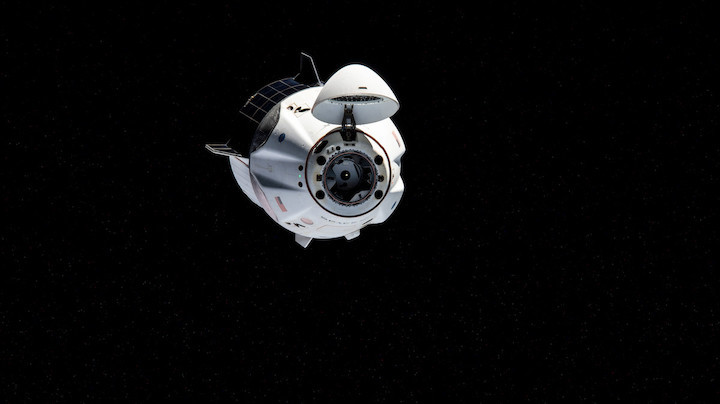
High winds predicted off the coast of Florida this week will keep SpaceX’s Crew Dragon Resilience spacecraft and its four-person crew in orbit until Saturday, three days after their previously scheduled return to Earth from the International Space Station.
NASA announced Monday that the return of the Crew Dragon Resilience spacecraft would be delayed.
The mission, known as Crew-1, was supposed to undock from the space station and re-enter the atmosphere Wednesday, targeting a parachute-assisted splashdown in the Gulf of Mexico off the coast of the Florida Panhandle.
In a statement, NASA said its teams and SpaceX managers agreed to move the Crew-1 mission’s undocking and return to Earth after reviewing weather forecasts in the Crew Dragon splashdown zones off the Florida coast. Forecasters currently predict wind speeds above safety criteria for splashdown.
NASA astronauts Mike Hopkins, Victor Glover, Shannon Walker, and Japanese mission specialist Soichi Noguchi are now scheduled to wrap up their mission with a splashdown in the Gulf of Mexico off the coast of Panama City, Florida, at 11:36 a.m. EDT (1536 GMT) Saturday.
The astronauts will board their Crew Dragon Resilience capsule Friday and close the hatch leading to the space station at about 3:50 p.m. EDT (1950 GMT) Friday. After a final check of forecast weather conditions in the splashdown zone, mission control will give a “go” for undocking of the Dragon capsule at 5:55 p.m. EDT (2155 GMT).
NASA said ground teams will continue monitoring weather conditions off the coast of Florida ahead of the Dragon spacecraft’s planned undocking Friday.
The automated departure maneuvers will carry the Dragon spacecraft a safe distance away from the space station, setting the stage for a retrograde braking burn to allow the ship to drop out of orbit for a scorching re-entry back into the atmosphere Saturday.
After descending to the sea under four parachutes, the astronauts will be helped out of their spaceship by SpaceX recovery teams. They will undergo preliminary medical checks before returning to shore by helicopter, then the crew will travel by airplane to their home base at NASA’s Johnson Space Center in Houston.
Assuming Hopkins and his crewmates come back to Earth on Saturday, they will be wrapping up 166 days off the planet since their Nov. 15 liftoff from NASA’s Kennedy Space Center in Florida.

SpaceX and NASA have seven splashdown zones available off the coast of Florida, with locations in the Gulf of Mexico near Pensacola, Panama City, Tallahassee, and Tampa. Three sites in the Atlantic Ocean northeast of Cape Canaveral, east of Daytona beach, and northeast of Jacksonville are also options.
The weather criteria for splashdown of a Crew Dragon spacecraft include wind speeds no greater than 12 mph, or about 10.5 knots. Managers also want the right mix of wave heights and wave periods, and a low probability of lightning.
The Crew Dragon Resilience spacecraft is in the final stretch of its first space mission. The Crew-1 flight is the first of six regular crew rotation missions to the International Space Station planned by SpaceX under a multibillion-dollar contract with NASA.
The Crew-1 astronauts are being replaced by four fresh crew members who docked at the space station Saturday aboard SpaceX’s Crew Dragon Endeavour spacecraft. The docking marked the first time two U.S. crew spaceships have been attached to the space station at the same time.
Crew-2 commander Shane Kimbrough, pilot Megan McArthur, Japanese astronaut Akihiko Hoshide, and European Space Agency mission specialist Thomas Pesquet will remain on the space station more than six months before the Crew-3 astronauts arrive at the space station in October.
Walker will hand over command of the space station’s Expedition 65 crew this week ahead of her return to Earth on the Crew Dragon Resilience capsule.

The Crew-1 mission’s flight back to Earth will conclude a busy month of crew rotations at the space station.
On April 9, a Russian Soyuz spacecraft lifted off from the Baikonur Cosmodrome in Kazakhstan with two Russian cosmonauts and one NASA astronaut. They replaced an outgoing crew of two Russians and one American, who landed on their Soyuz descent craft April 17.
Until the Crew-1 mission departs, the crew on the space station will have to be creative in finding sleeping quarters for the 11 astronauts and cosmonauts. The station has typically had six long-term crew members at a time, but the start of SpaceX crew missions allowed NASA to raise that to a full-time staff of seven.
The 11-person crew complement is the highest short-term staffing level on the space station since the penultimate space shuttle mission in 2011. The record number of crew members on the orbiting outpost at one time is 13 people, a level reached when shuttle astronauts joined long-term space station residents for one-to-two weeks at a time.
Joel Montalbano, NASA’s space station manager, said earlier this month that the space station’s life support systems could support the 11 residents for up to 20 days, if necessary. The limitations include the station’s oxygen generator and carbon dioxide removal system, he said.
“We have to fly some additional consumables for the extra crew members,” Montalbano said. “Of course, you have to look at sleeping arrangements. We’ll have some temporary sleeping arrangements for the crew members because we’ll have so many people.”
Some of the astronauts planned to sleep inside their Crew Dragon capsules, which serve as lifeboats during long-term stays at the space station.
Quelle: SN
----
Update: 29.04.2021
.
SpaceX Dragon splashdown pushed to Saturday
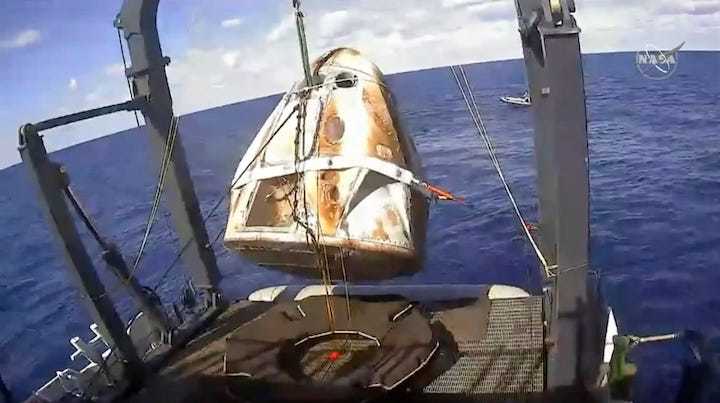
After reviewing weather conditions, NASA and SpaceX have decided to push the splashdown of astronauts aboard the Dragon capsule to Saturday morning.
Teams are now targeting a return to Earth at 11:36 a.m. Saturday, May 1, in the Gulf of Mexico off the coast of Florida.
The crew Dragon spacecraft, named Resilience, is scheduled to undock from the International Space Station at 5:55 p.m. Friday to begin the journey home carrying astronauts Mike Hopkins, Victor Glover, Shannon Walker and Soichi Noguchi.
The prime and backup splashdown zones will be determined the day before undocking. Any late changes could occur within about six hours of undocking depending on several factors such as weather in the splashdown area.
The Coast Guard will issue restrictions to boaters and establish a 10-nautical-mile safety zone around the expected splashdown location to ensure safety. Bystanders on land will not be able to see the spacecraft splash into the ocean.
When an earlier Crew Dragon capsule splashed down in the Gulf las year — the first such landing since the Apollo era — dozens of pleasure boats swarmed to the area.
But getting so close to capsule is very risky.
Speaking from the space station, Commander Hopkins explained that the hypergolic fuel used to power the Dragon's thrusters could be dangerous.
“If there’s any kind of leak we’re OK in the capsule typically but it’s the people in the boats that could be really at the most risk, “ he warned. “It’s very important for them to stay at a safe distance.”
When an earlier Crew Dragon capsule splashed down in the Gulf las year — the first such landing since the Apollo era — dozens of pleasure boats swarmed to the area.
But getting so close to capsule is very risky.
Speaking from the space station, Commander Hopkins explained that the hypergolic fuel used to power the Dragon's thrusters could be dangerous.
“If there’s any kind of leak we’re OK in the capsule typically but it’s the people in the boats that could be really at the most risk, “ he warned. “It’s very important for them to stay at a safe distance.”
Quelle: Florida Today
----
Update: 1.05.2021
.
SpaceX making 1st US crew splashdown in dark since Apollo 8
SpaceX will attempt the first U.S. splashdown of returning astronauts in darkness since the Apollo 8 moonshot in 1968
CAPE CANAVERAL, Fla. -- SpaceX this weekend will attempt the first U.S. splashdown of returning astronauts in darkness since the Apollo 8 moonshot in 1968.
Elon Musk’s company is targeting the predawn hours of Sunday to bring back three NASA astronauts and one from Japan, after dangerously high wind scuttled a pair of earlier attempts.
The astronauts — only the second crew to fly SpaceX — will depart the International Space Station on Saturday night aboard the SpaceX Dragon capsule that carried them up last November. They’ll aim for a splashdown 6 1/2 hours later, around 3 a.m. in the Gulf of Mexico off the coast of Panama City, Florida.
SpaceX brought back a station cargo capsule with a splashdown in darkness in January. That adds to NASA's confidence for a nighttime homecoming, said Rob Navias, a spokesman at Johnson Space Center in Houston.
“SpaceX has done numerous dress rehearsals and spent a lot of time with nighttime recoveries,” he said.
Navias said the time slot provided the best weather conditions in the coming days.
The capsule carrying Apollo 8's three astronauts — the first men to fly to the moon — splashed into the Pacific near Hawaii before dawn on Dec. 27, 1968.
The Russians also had one crew splashdown in darkness, back in 1976. The two-man capsule could not dock to the Soviet Union's Salyut 5 space station as intended and had to make a hasty return, ending up in a partially frozen lake in Kazakhstan — in the middle of a blizzard. It took hours for recovery teams to rescue the cosmonauts.
Even with the early hour, the Coast Guard promises to have more patrols to keep sightseers at a safe distance. On a Sunday afternoon last August, pleasure boaters swarmed the capsule that parachuted into the Gulf of Mexico with the first SpaceX crew.
The departure of NASA's Mike Hopkins, Victor Glover and Shannon Walker and Japan's Soichi Noguchi will leave seven aboard the space station. Their replacements — representing the U.S., Japan and France — arrived last weekend in their own SpaceX capsule for a six-month mission. The three remaining crew members — one American and two Russians — launched in a Russian capsule from Kazakhstan three weeks ago.
Quelle: abcNews
----
Update: 2.05.2021
.
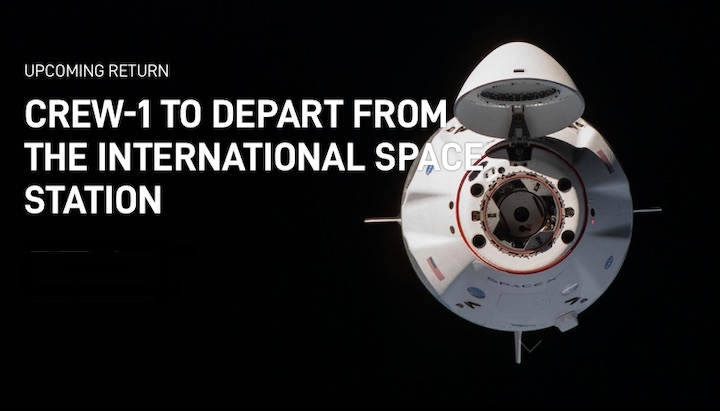
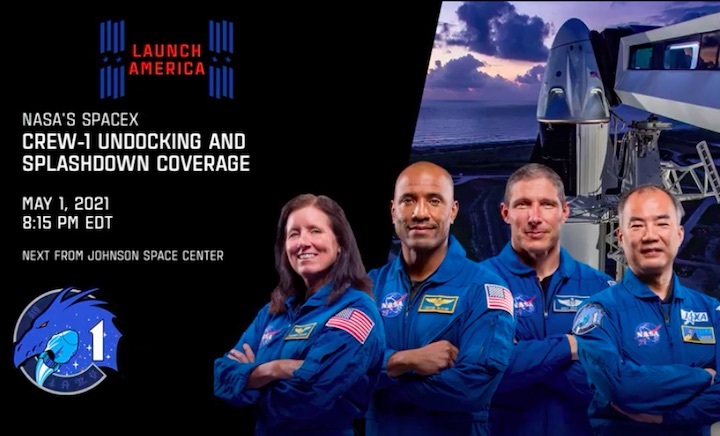
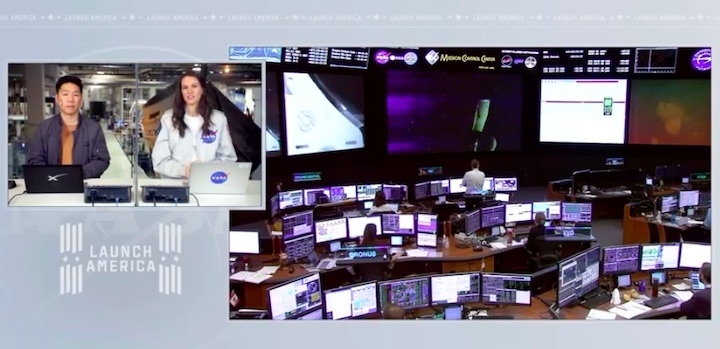
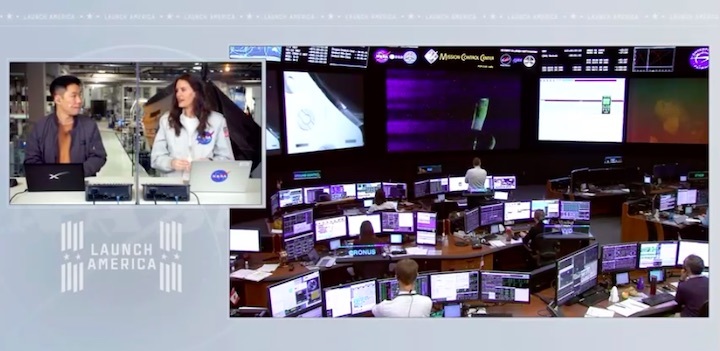
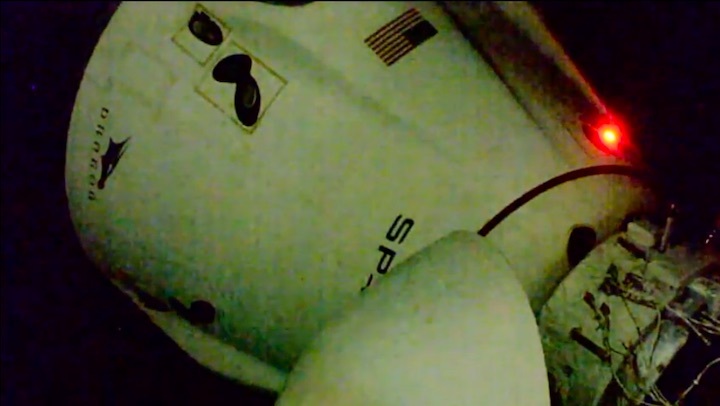
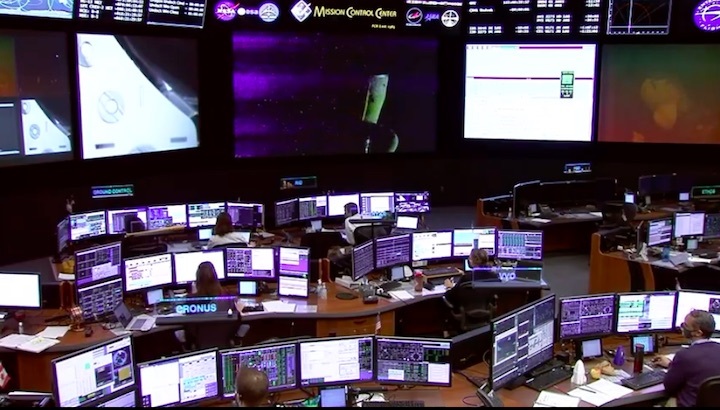
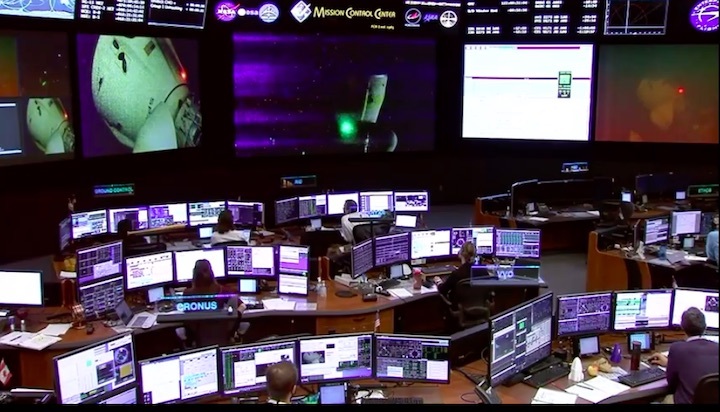
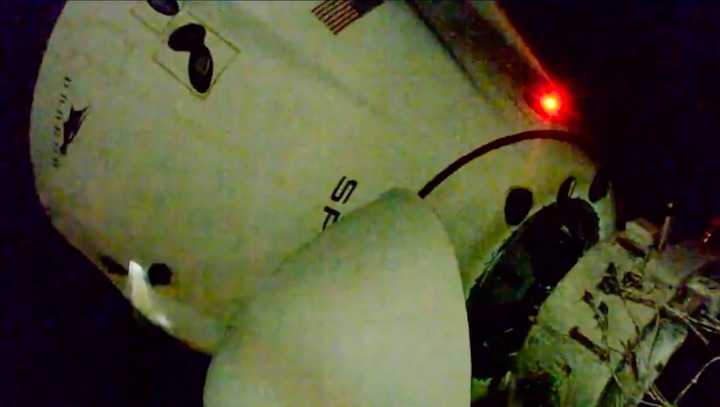
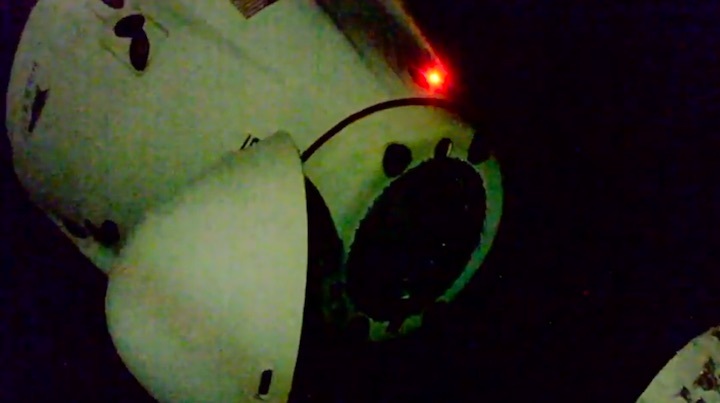
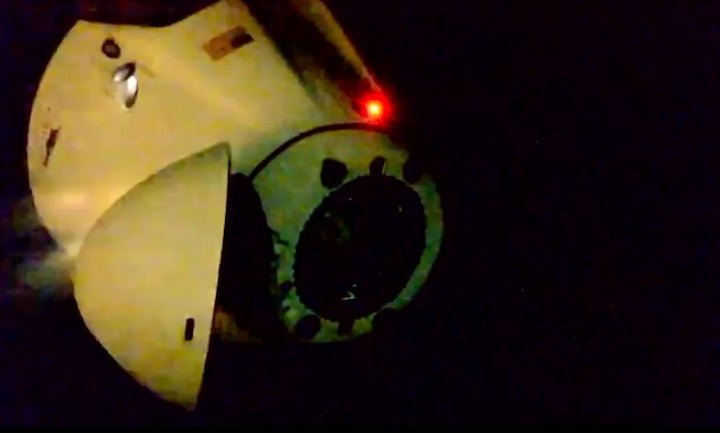
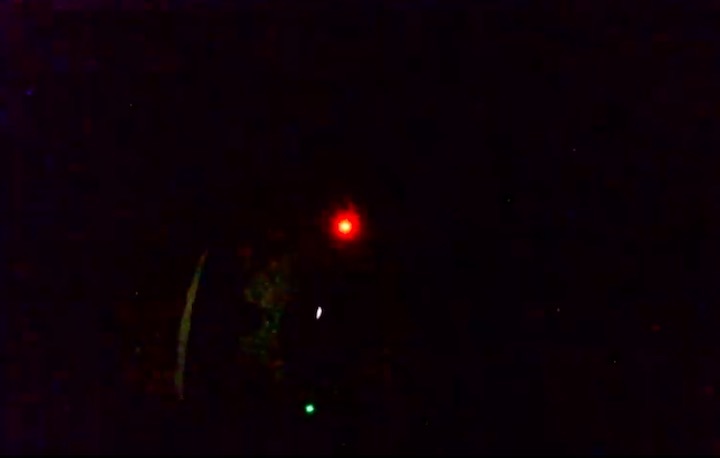
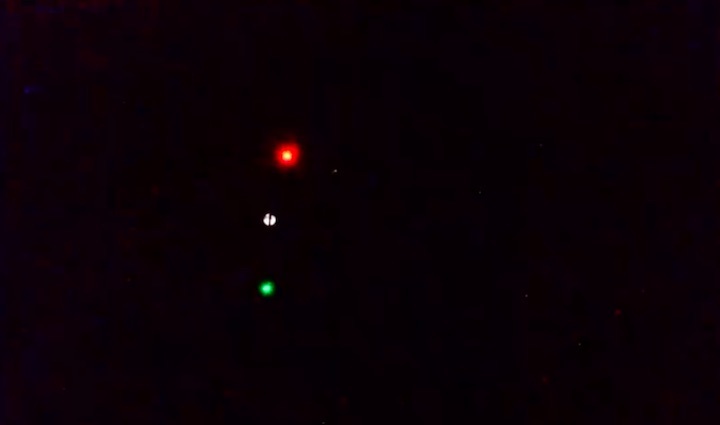
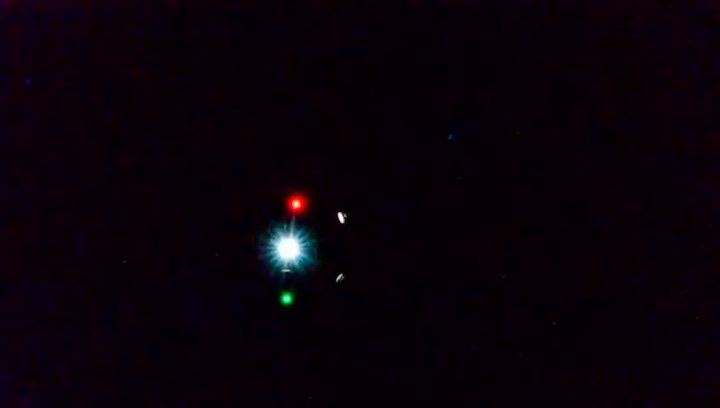
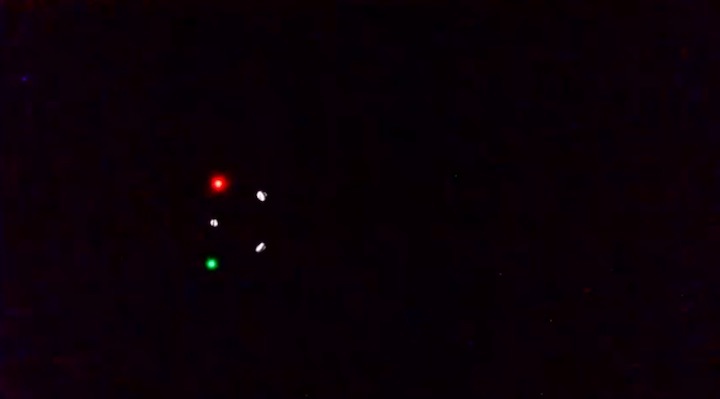
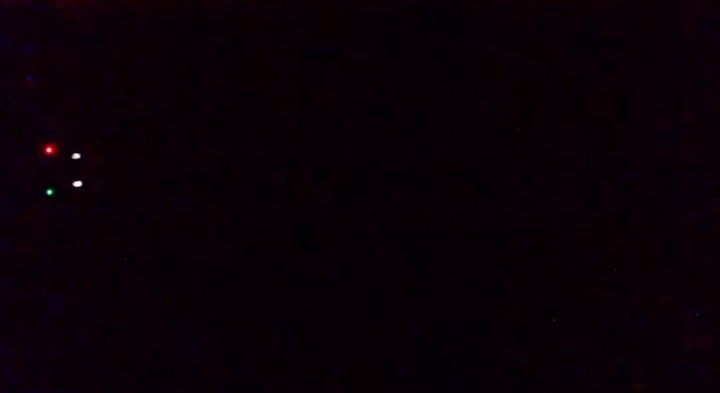
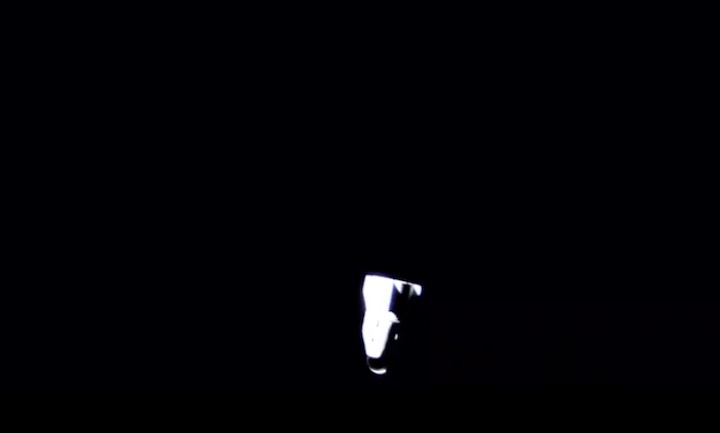
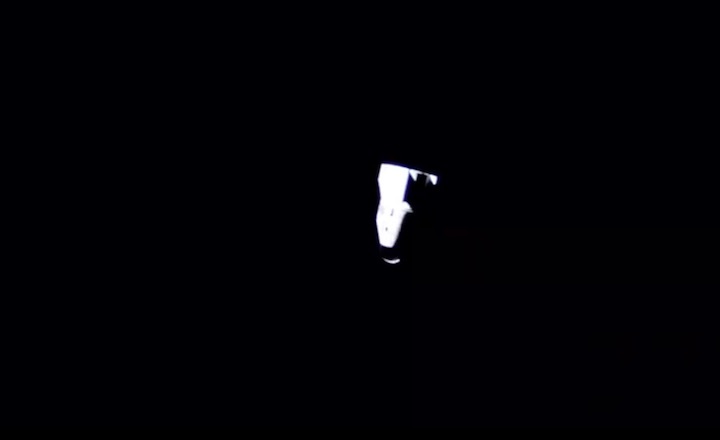
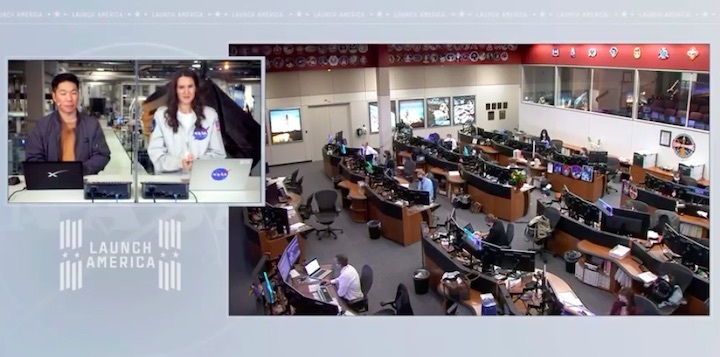
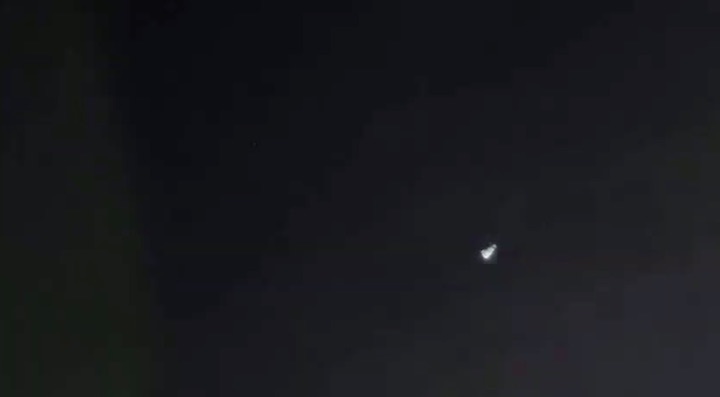
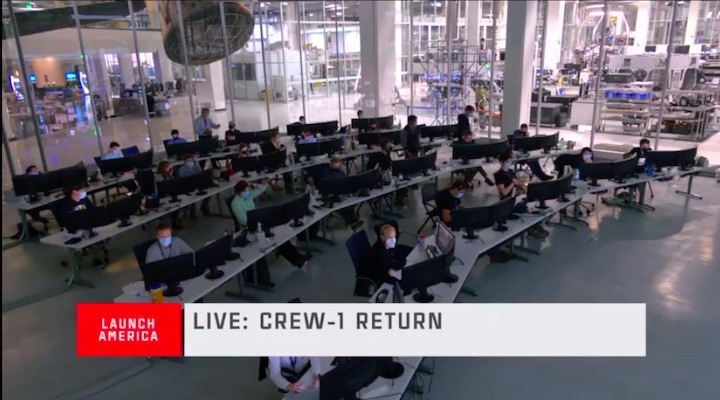
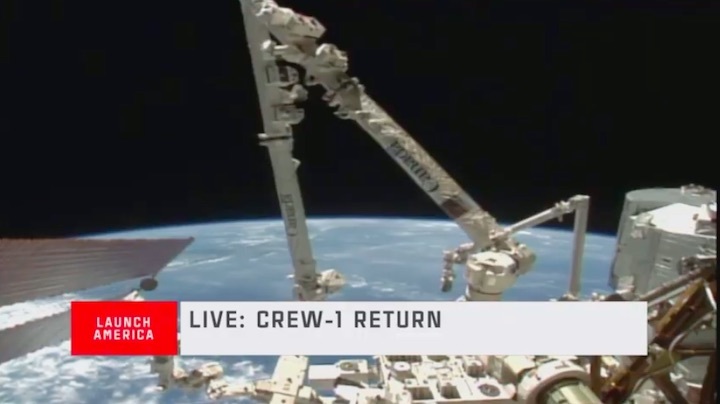
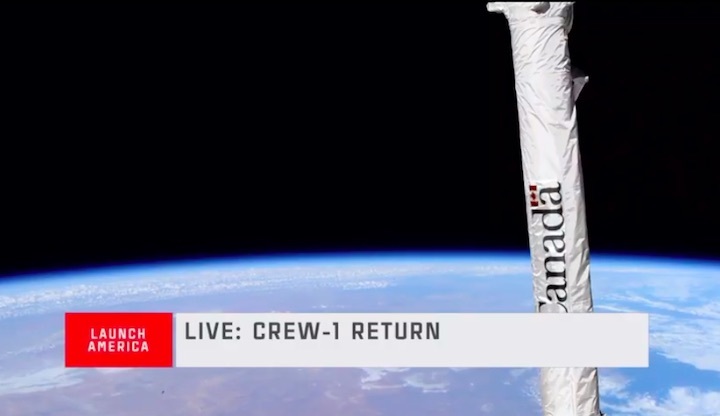
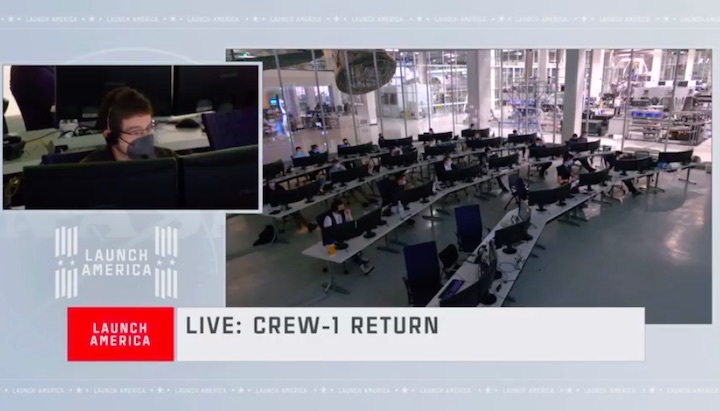
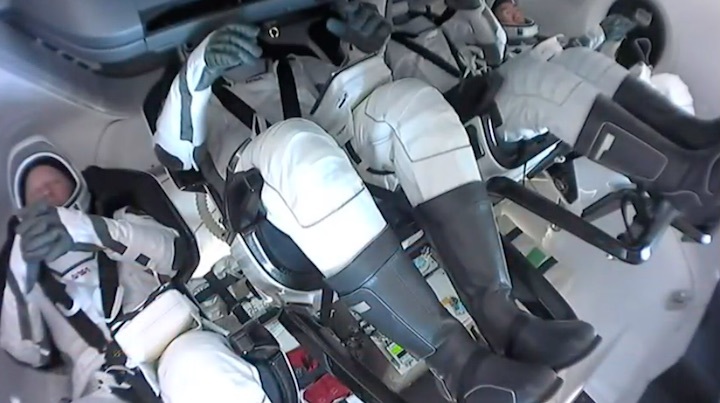
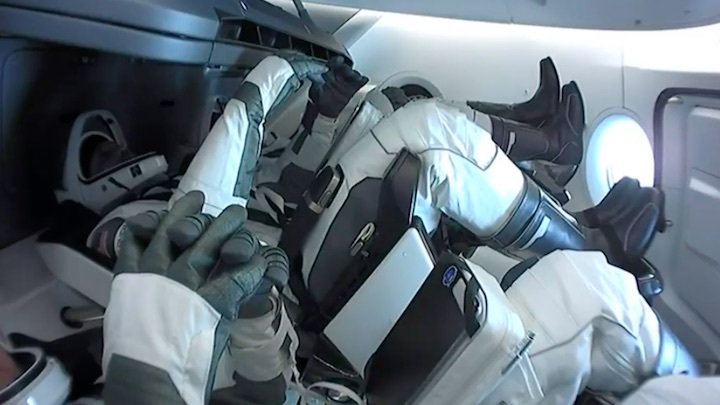
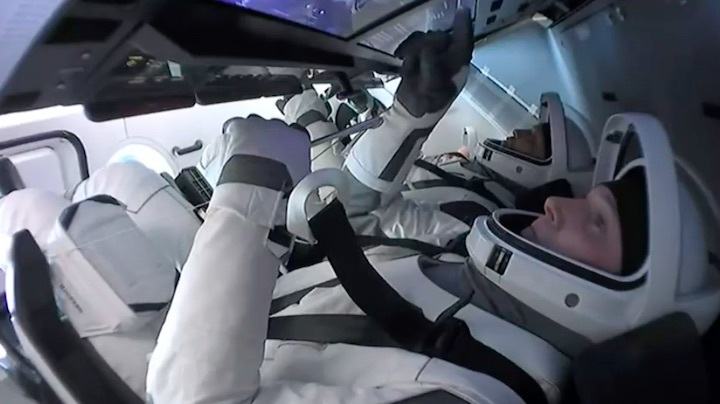
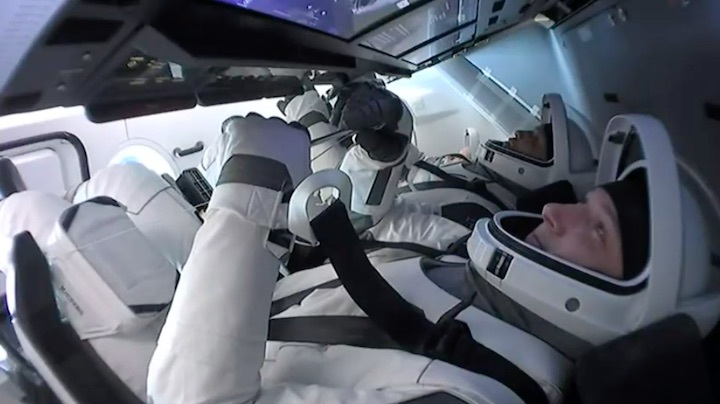
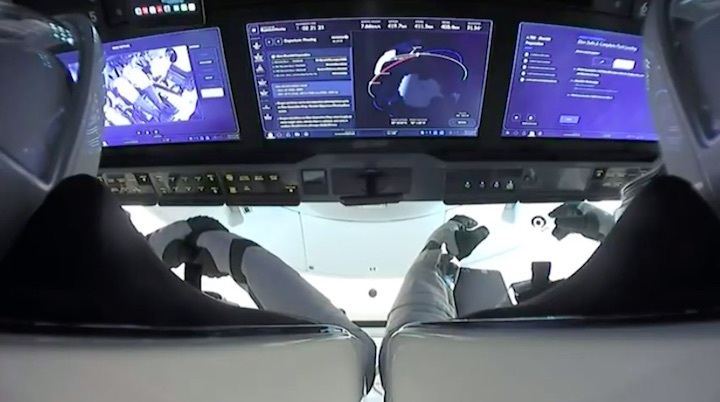
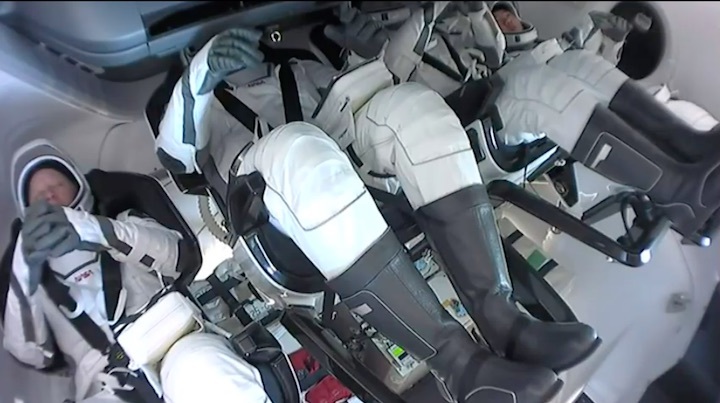

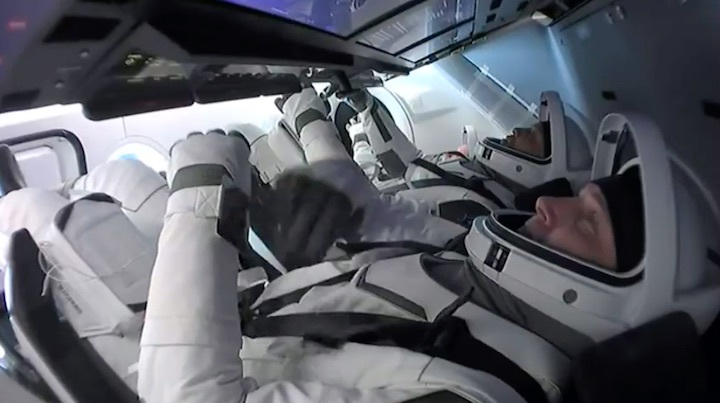
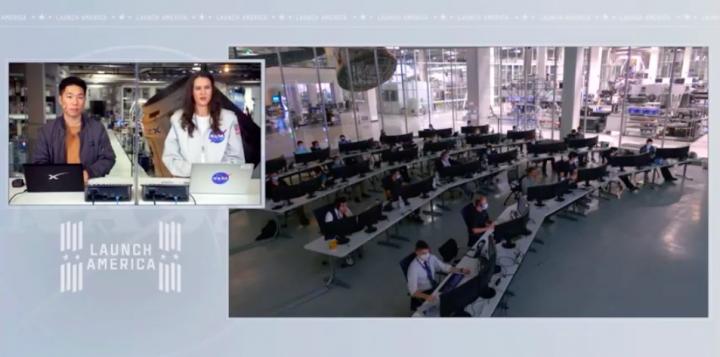
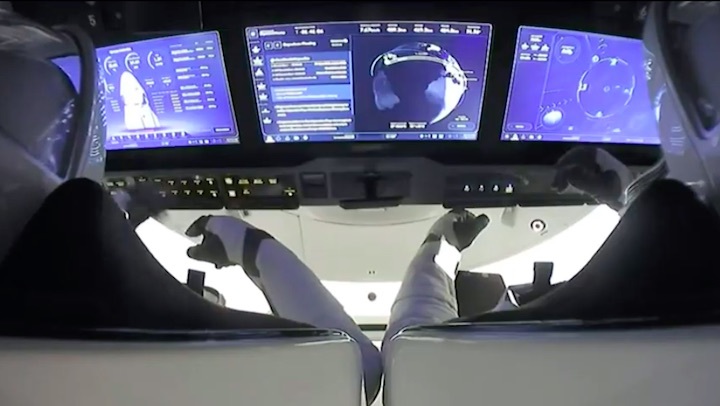
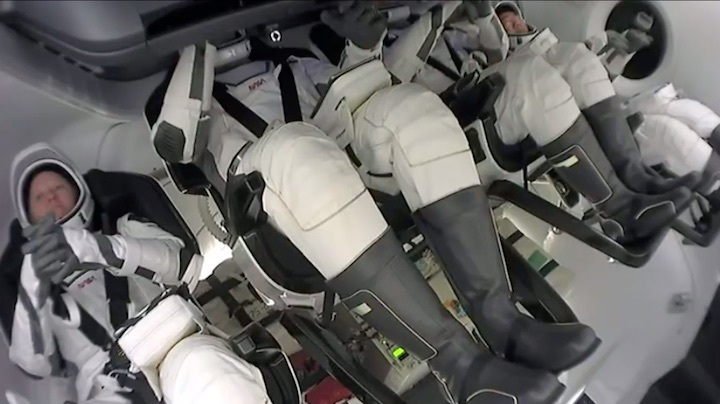
+++

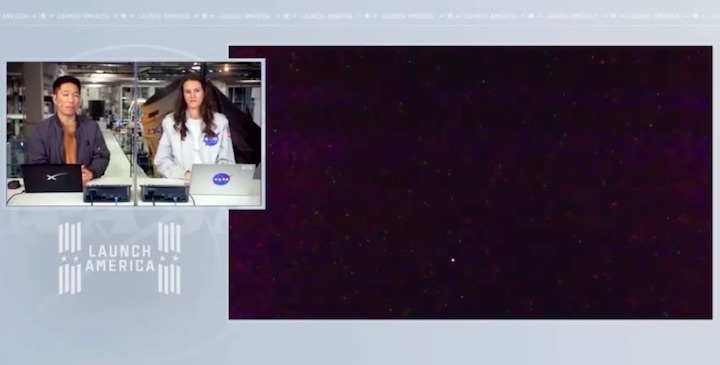
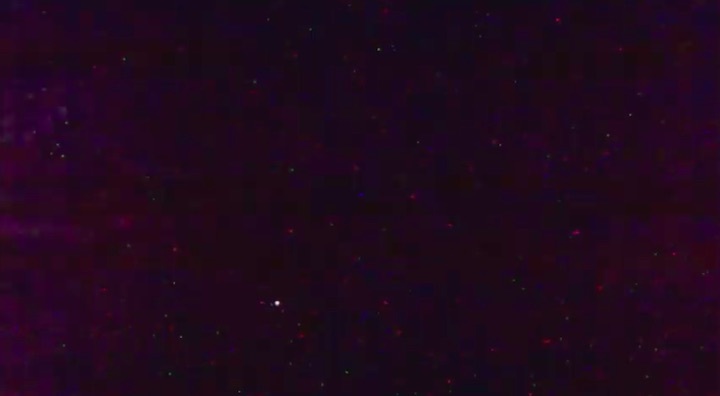

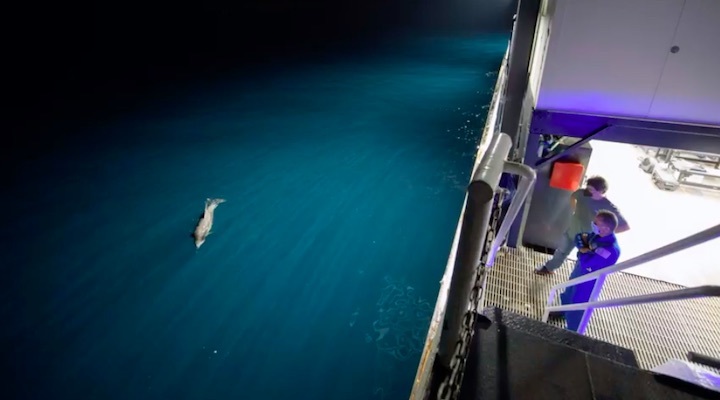
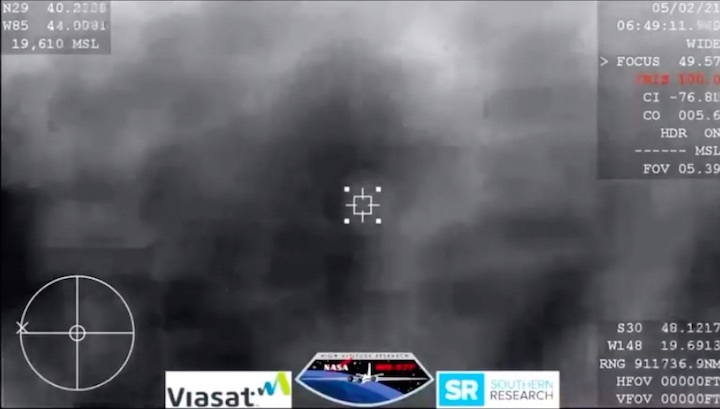
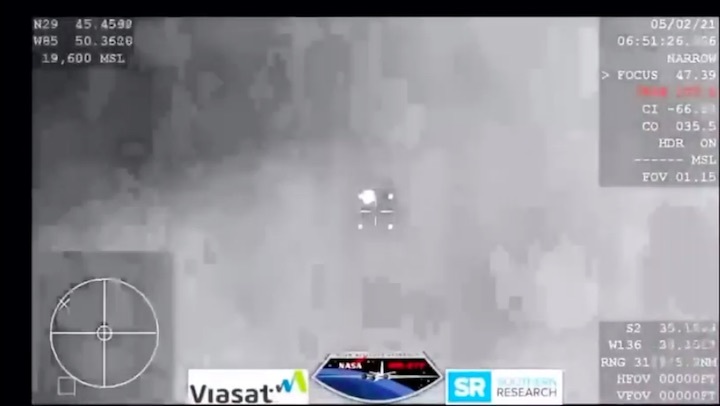
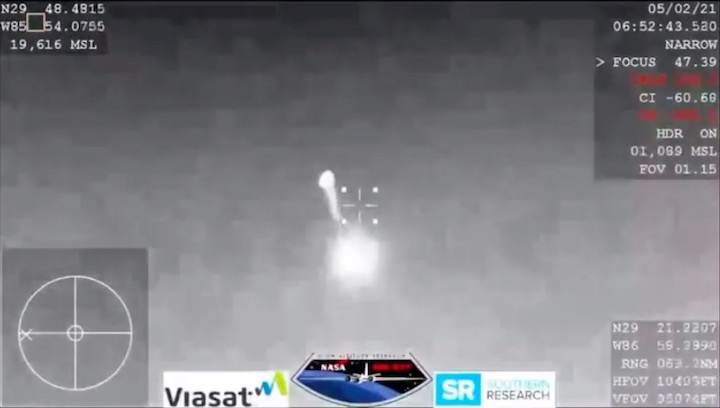
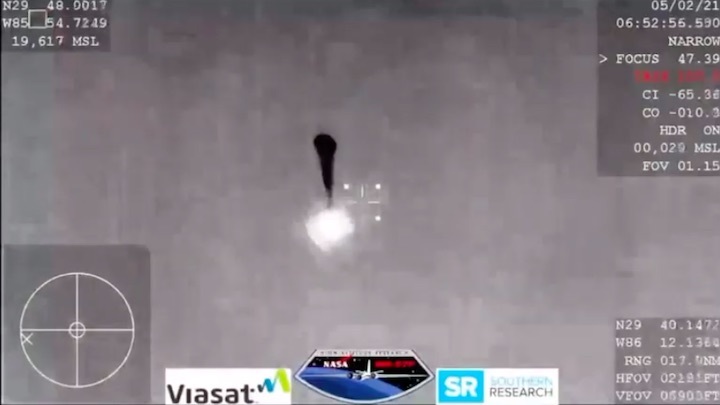
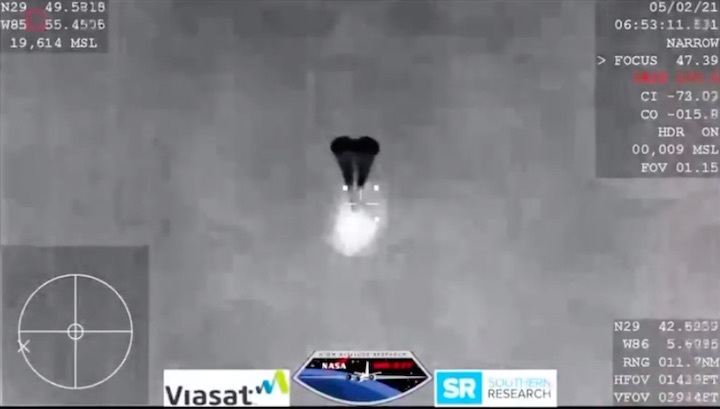
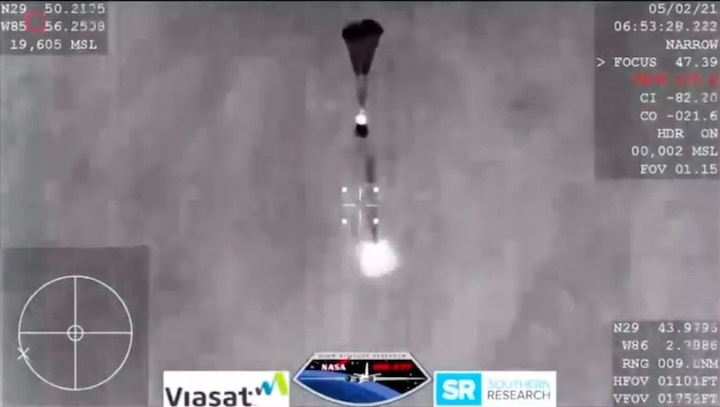
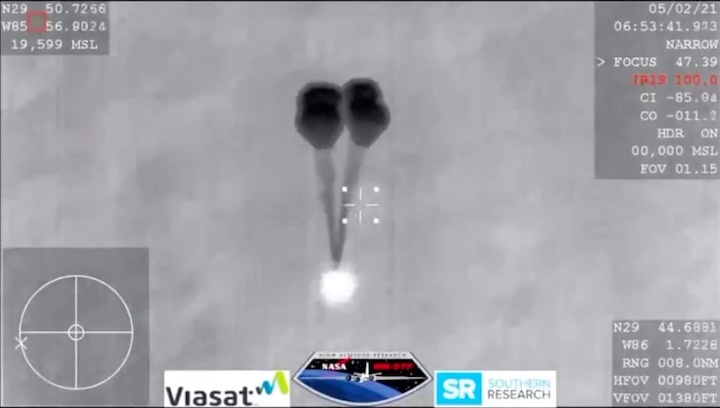
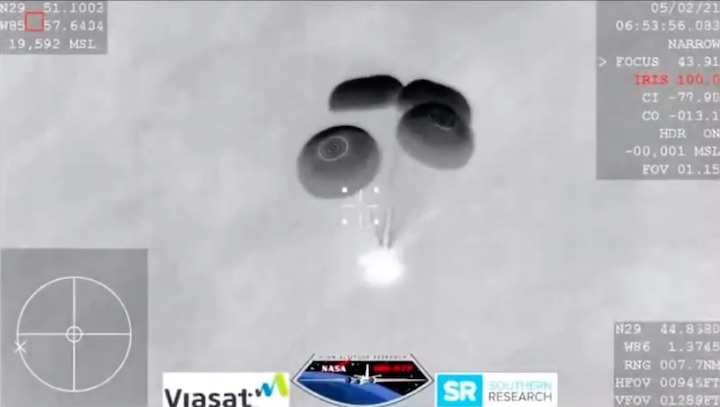
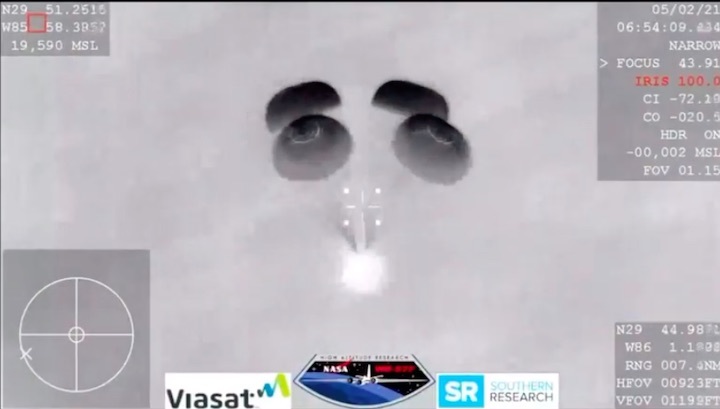
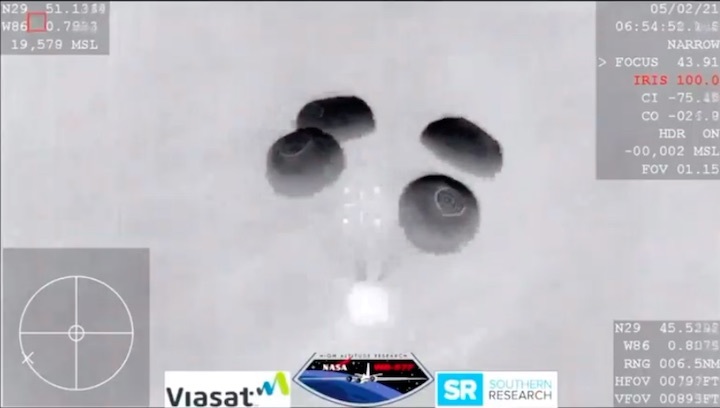
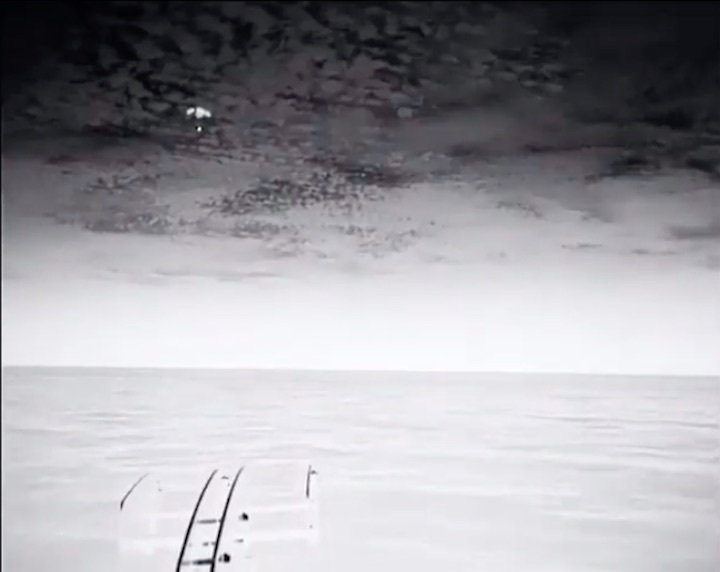
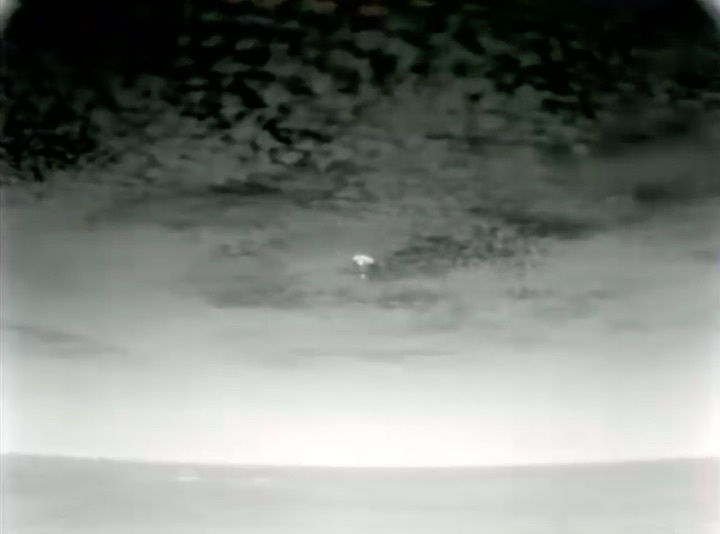

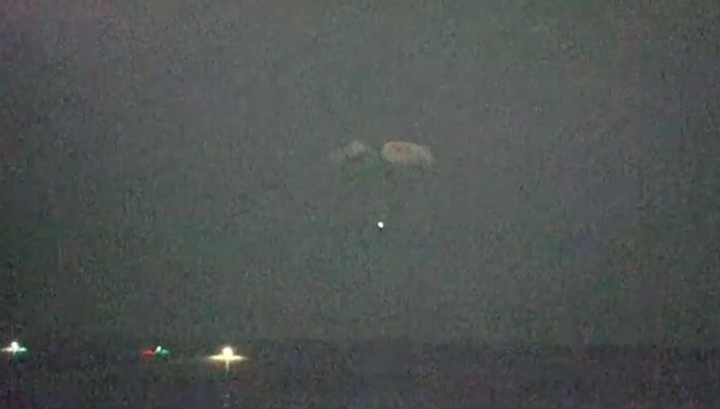
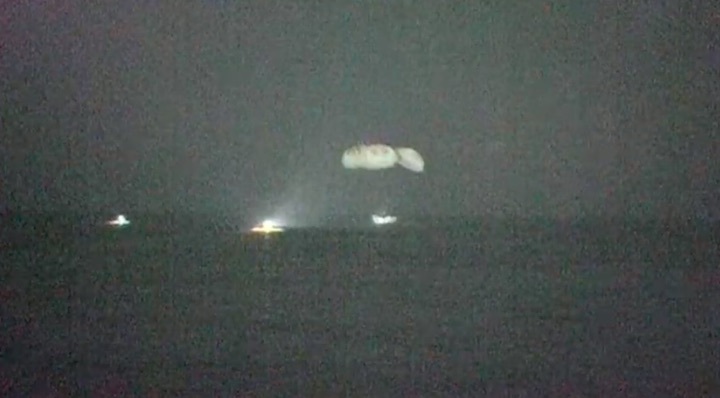
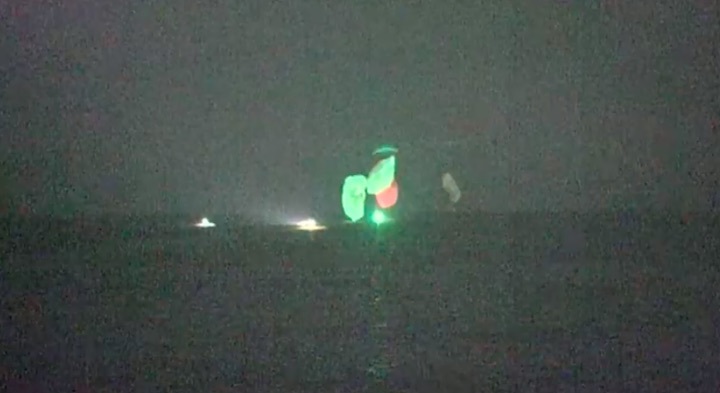
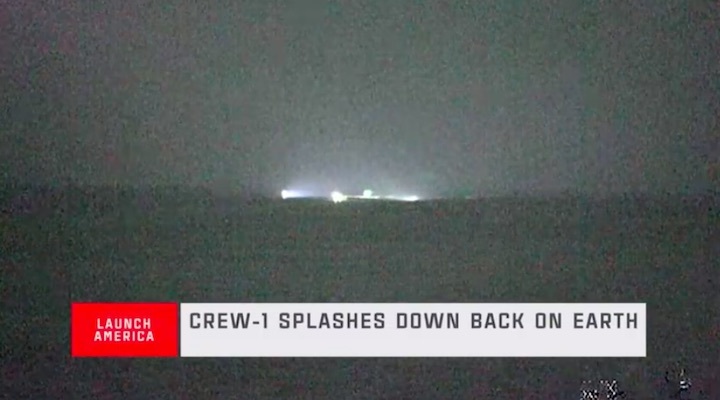
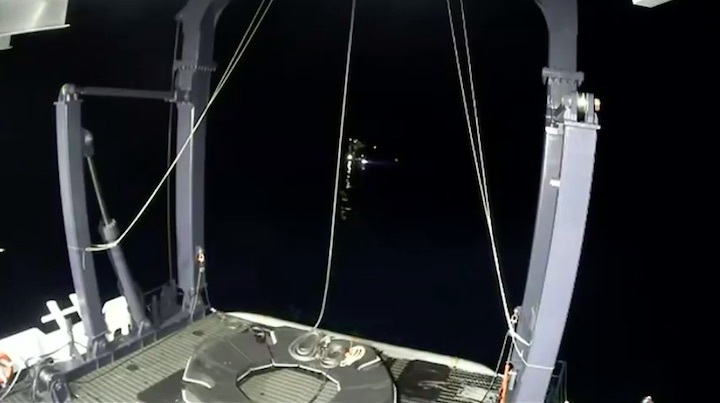
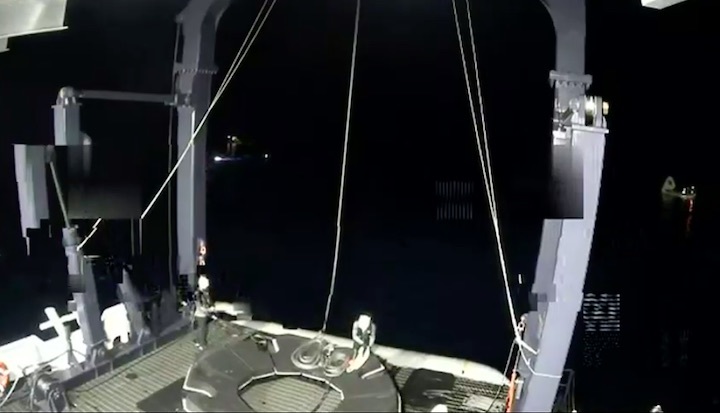
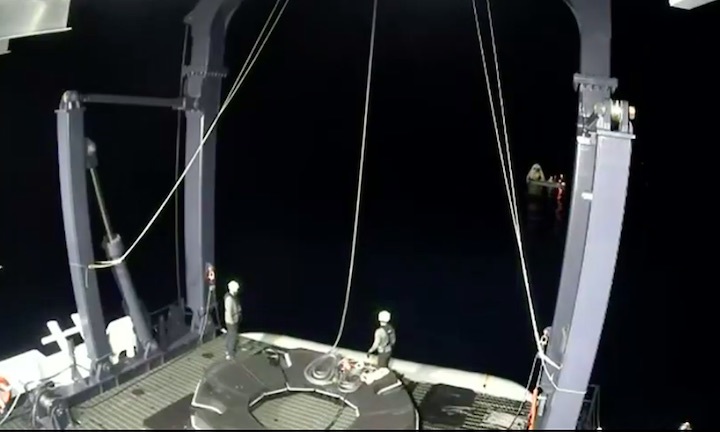
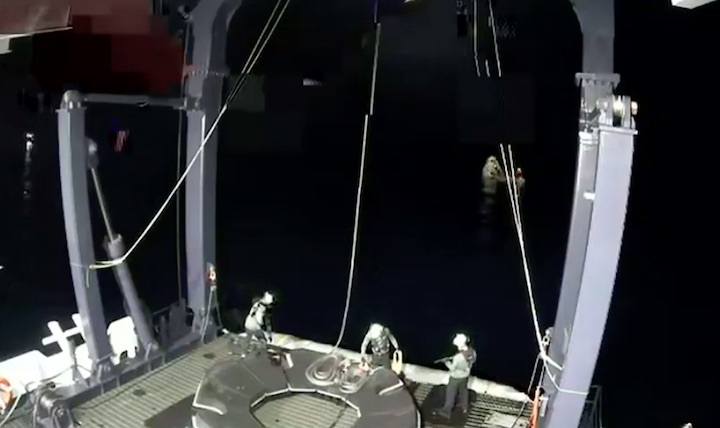

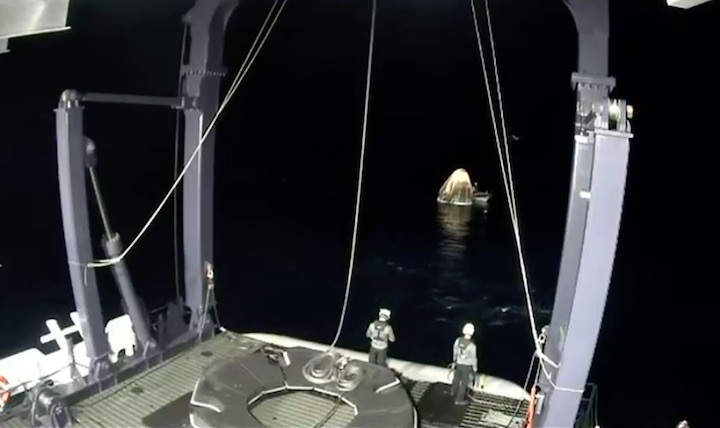
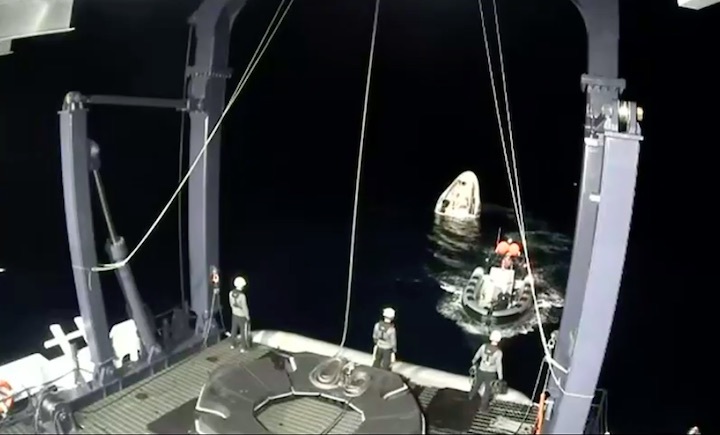
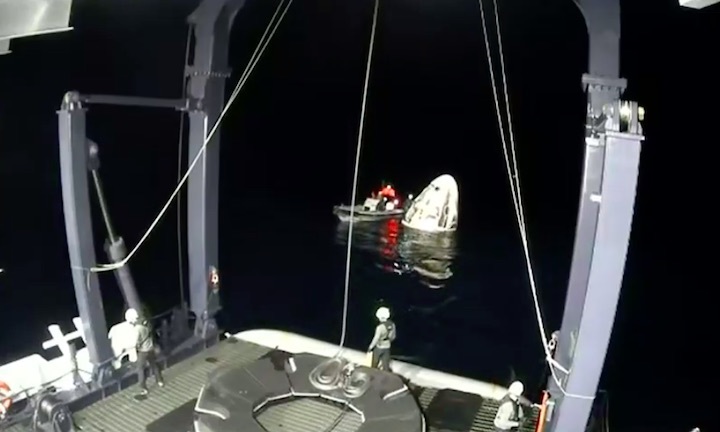
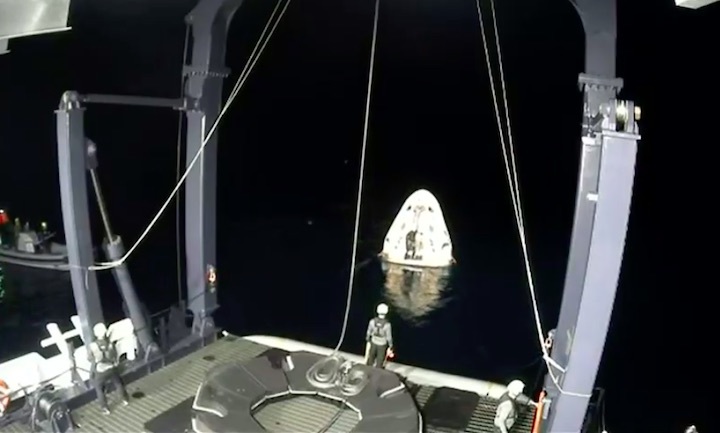
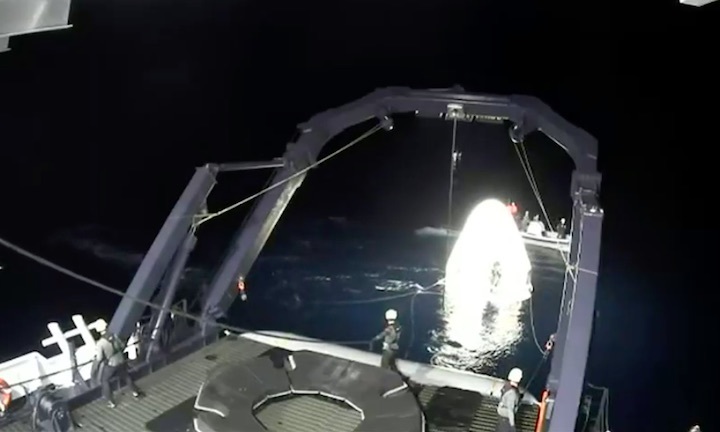
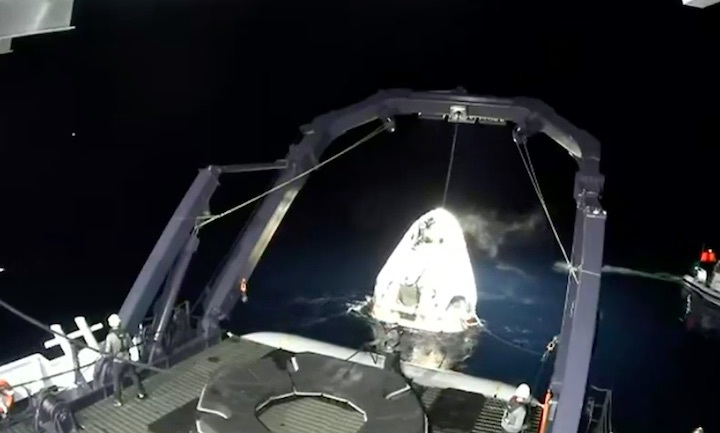
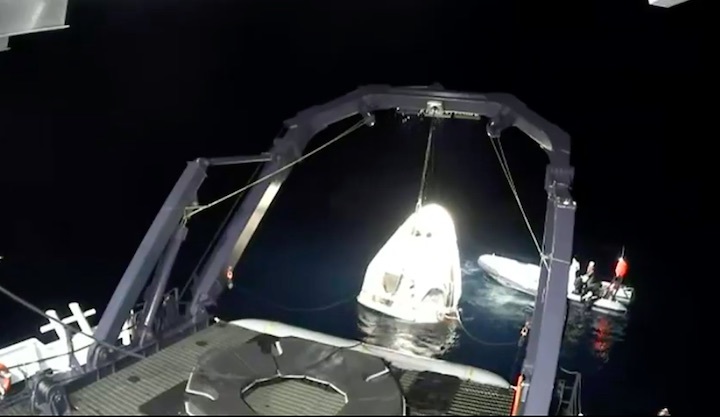
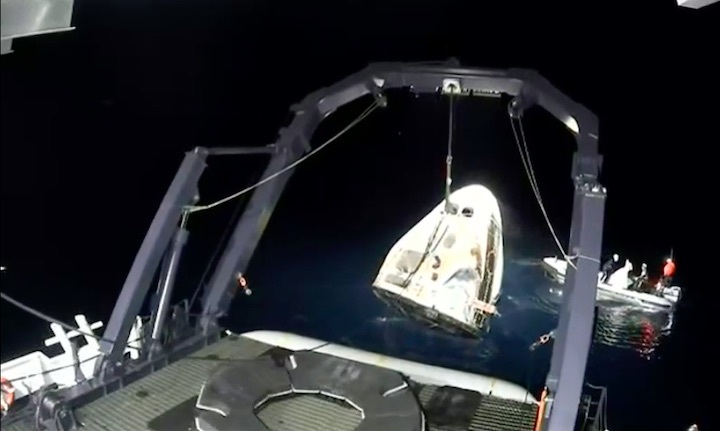
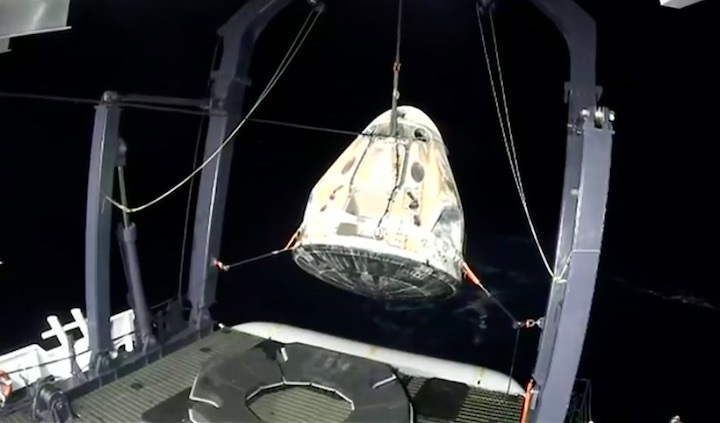

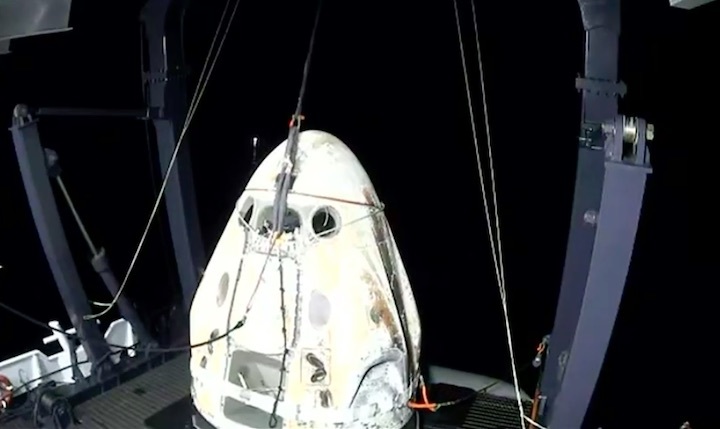
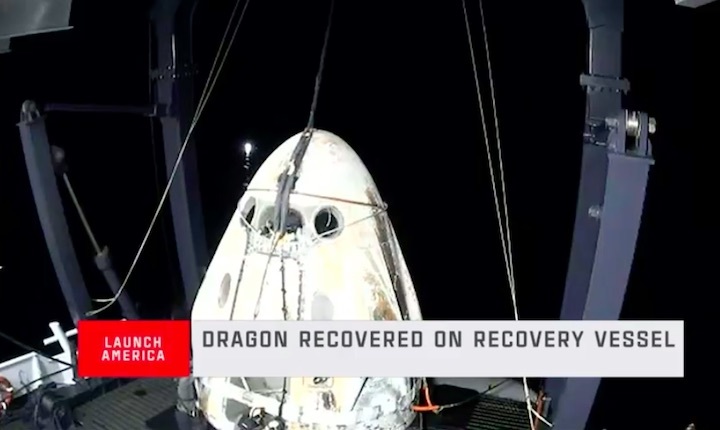
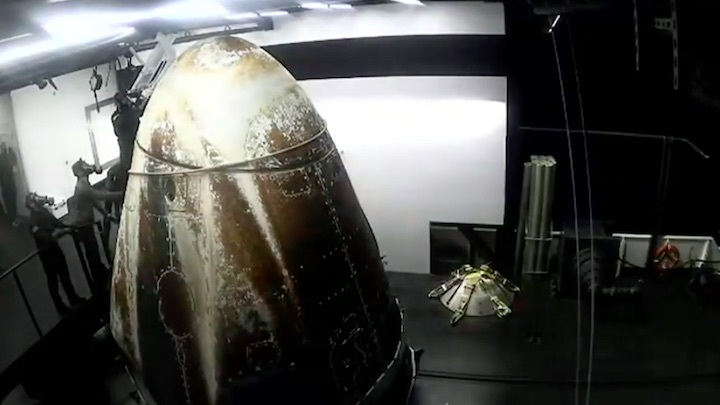

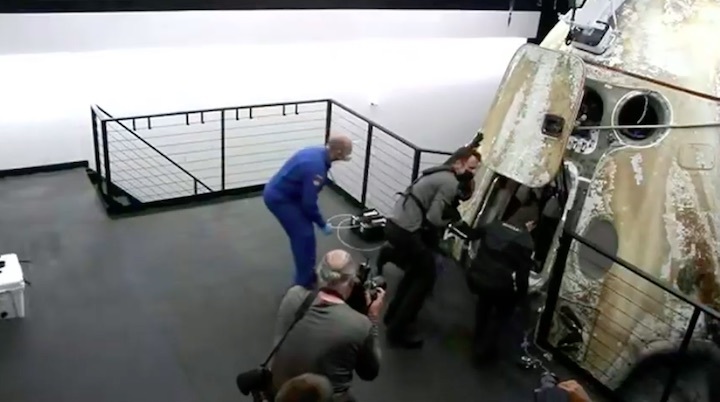
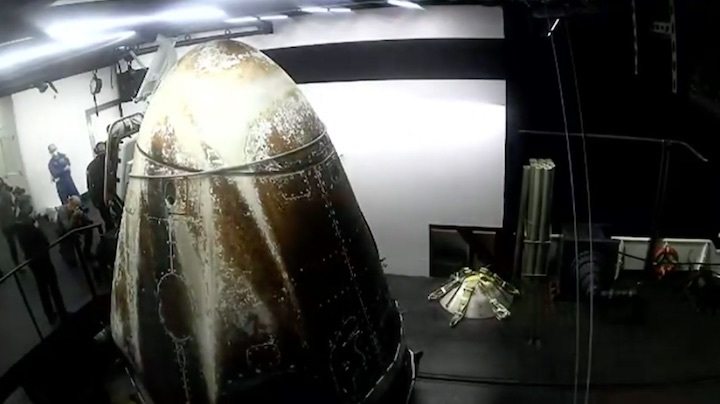
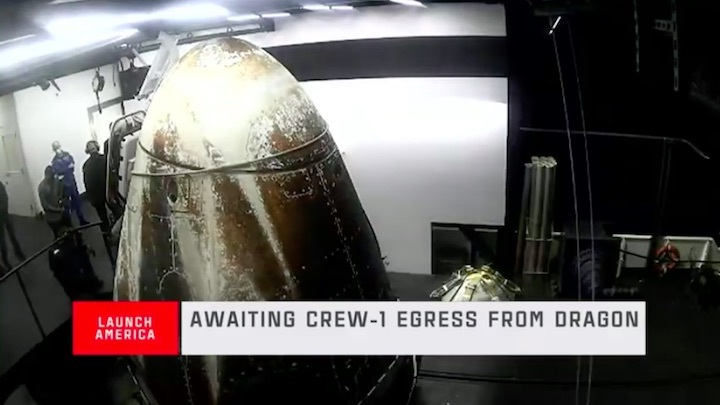
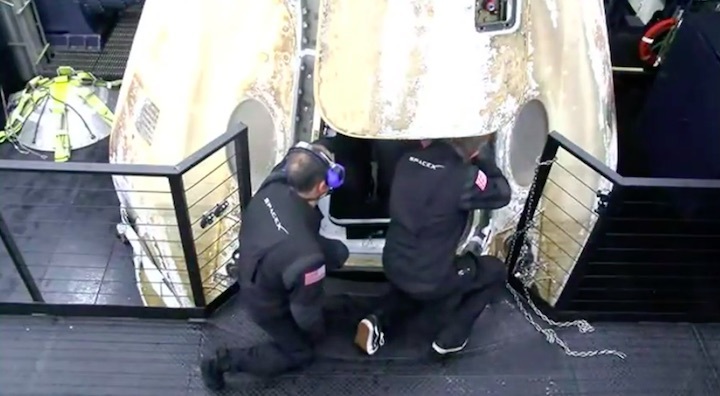
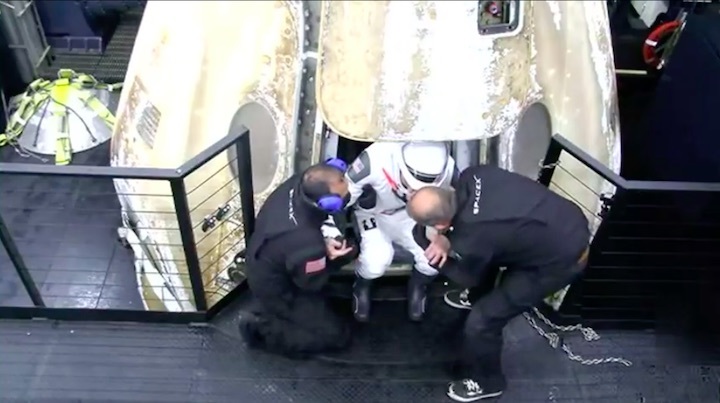
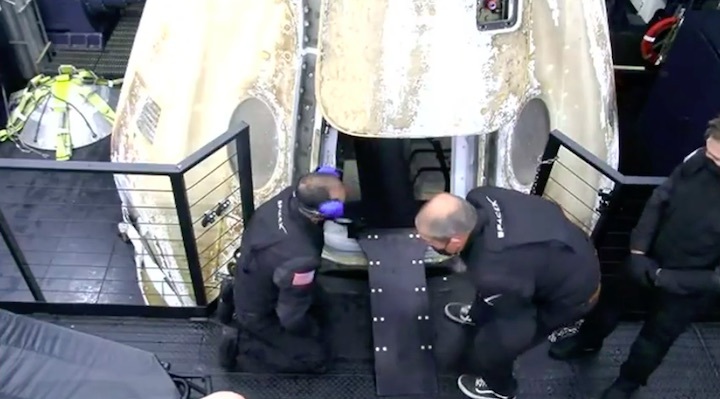
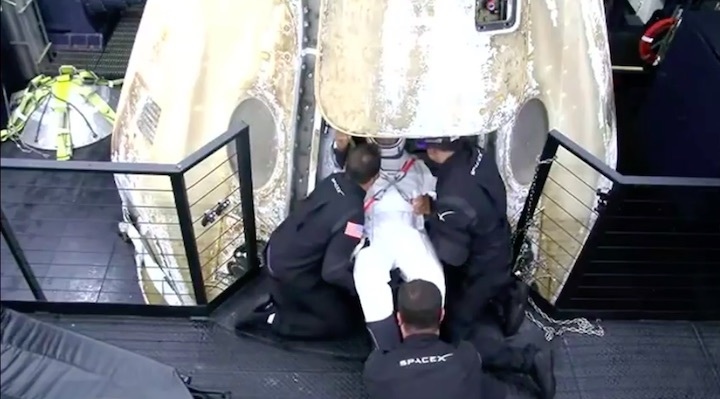
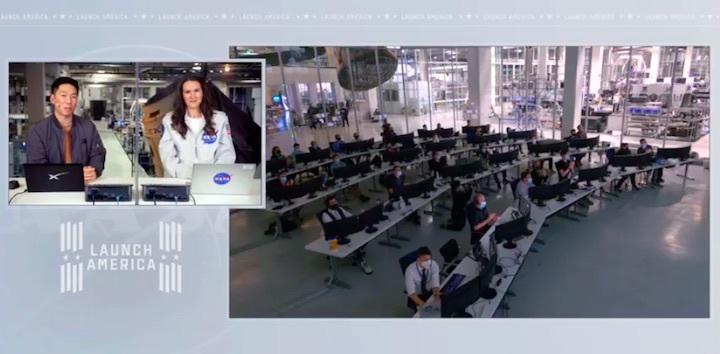

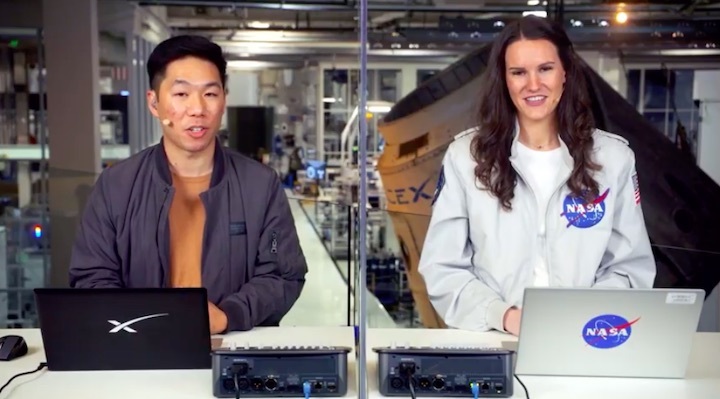
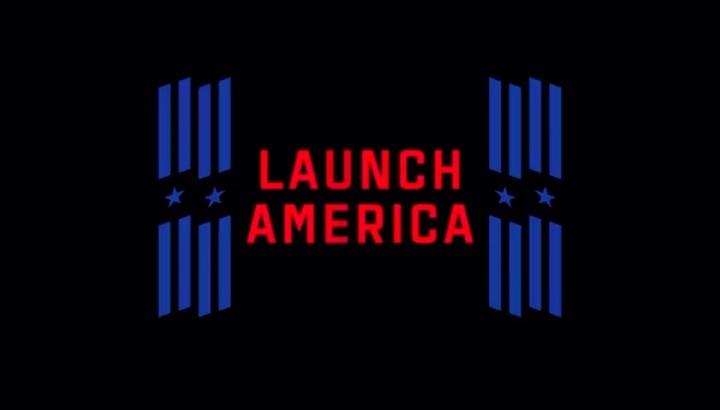
Quelle: SpaceX
+++
Let’s give NASA's
Crew-1 astronauts a hand!
Welcome home. In the most fitting fashion, their mission, which certified the return of astronaut launches from the U.S., ended with an equally historic nighttime splashdown at 2:56am ET (06:56 UT):
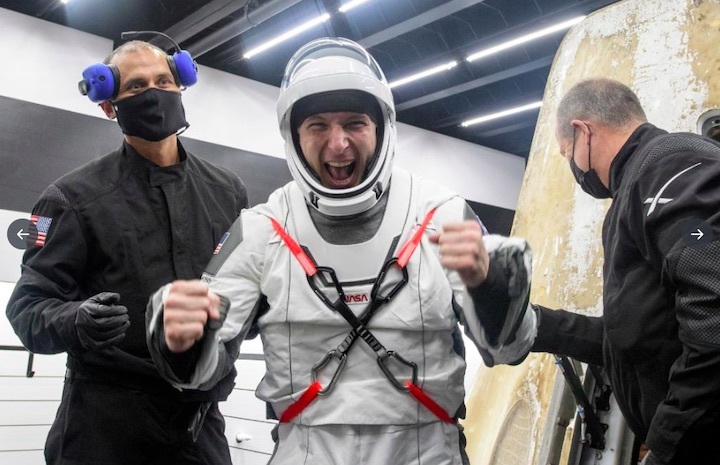
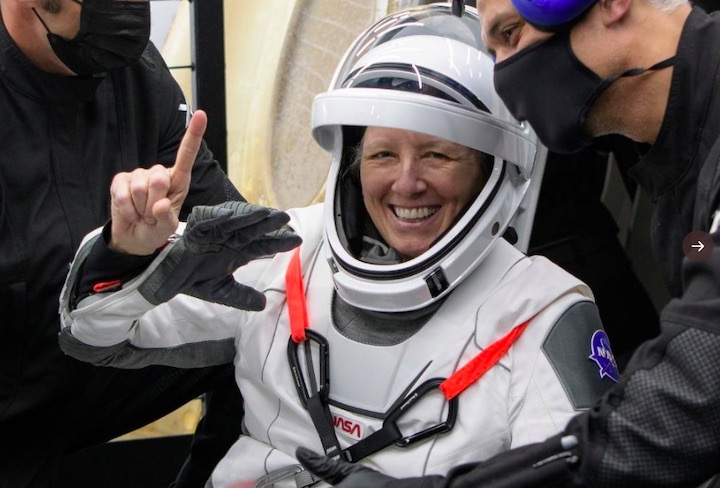


Quelle: NASA
